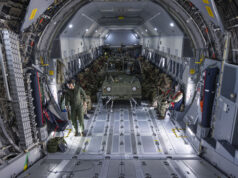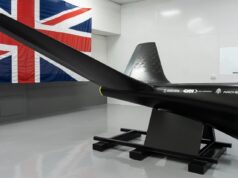Thales used this year’s Defence and Security Equipment International (DSEI) in London to lay out where it sees the future of defence technology.
The company announced new projects across cryptography, sonar, unmanned platforms and tactical communications, each tied to the themes of sovereignty and autonomy.
One of the headline reveals was the DCM5 cryptography system, described as a sovereign, quantum-resistant safeguard for government and coalition networks. It has been designed to UK CAPS High Grade and FIPS 140-3 Level 3 standards and is backwards compatible with Thales’ long-running Datacryptor series.
That compatibility means customers can upgrade without ripping out their existing systems, while gaining protection against future quantum threats.
At sea, Thales signed a memorandum of understanding with BAE Systems to work on sonar integration for the SSN-AUKUS submarine programme. The company wants to take on the role of Main Sonar Design Authority and Integrator, drawing on the wider UK sonar sector. If agreed, it would give Thales a central role in shaping the acoustic systems of Britain’s next generation of nuclear attack submarines, while keeping key skills rooted at home.
Autonomous systems were another recurring theme. A new partnership with Autonomous Devices will see Thales’ electronic warfare payloads mounted on long-endurance drones for detection and jamming roles. In the underwater space, Thales and HII announced trials combining the SAMDIS 600 synthetic aperture sonar with the REMUS 620 unmanned underwater vehicle, part of a push to automate mine countermeasures.
The company also set out plans to arm its Peregrine unmanned aircraft system. Already used for surveillance from HMS Lancaster, Peregrine is expected to trial the Martlet Lightweight Multirole Missile in 2026, a move that would give the Royal Navy a compact armed drone for close-range threats.
Exports also featured. Thales confirmed that Malaysia has ordered more than 100 of its new HF XL radios, the first international customer for a system built for long-range, jam-resistant communications across demanding environments.
On land, the company gave the first public showing of its Integrated Weapons Operation system. Built on its Agile C4I at the Edge framework, it is designed to link sensors and effectors into what Thales calls a “digital targeting web,” a concept that mirrors UK ambitions for more distributed, networked firepower.
Taken together, the announcements show Thales pushing to be more than just a supplier. The company is positioning itself as a design authority for critical national technologies, while at the same time packaging those systems for export.













